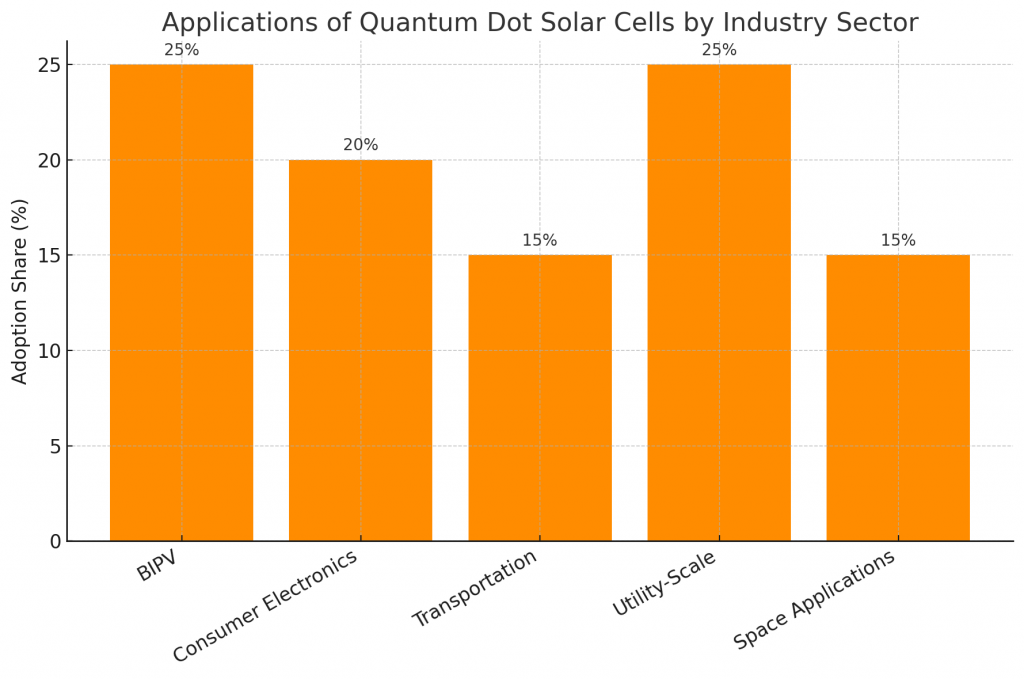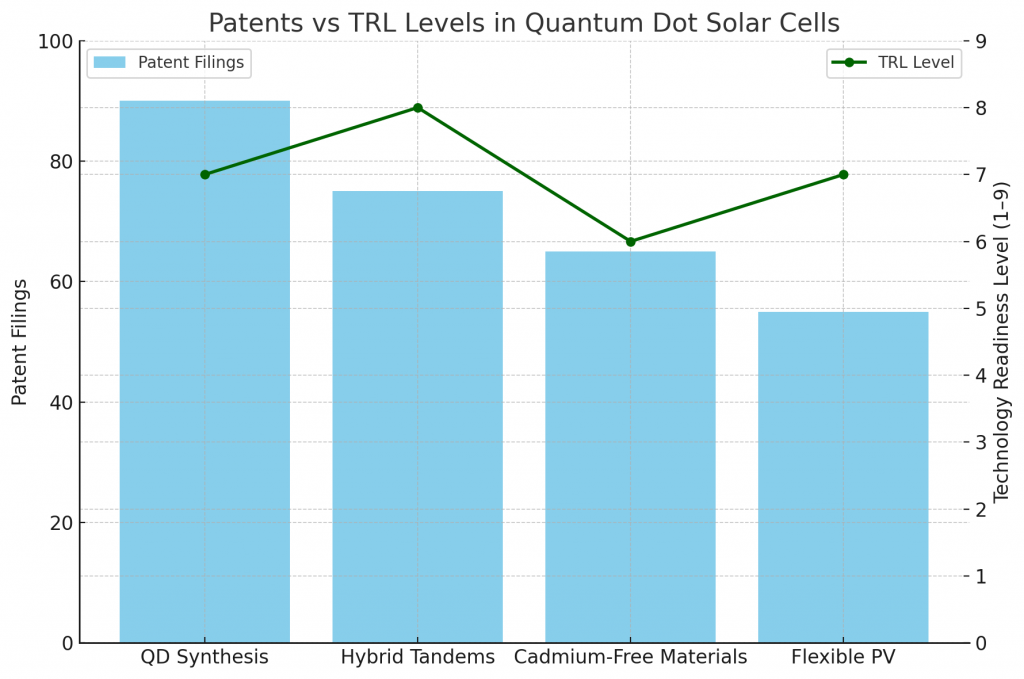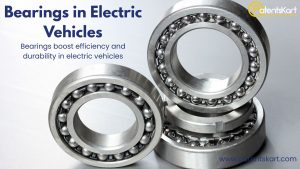The demand for clean, efficient, and sustainable energy solutions is driving breakthroughs in solar technologies. One of the most promising innovations is quantum dot solar cells, a next-generation photovoltaic solution that offers higher efficiency, flexibility, and tunability compared to traditional silicon panels.
By harnessing nanotechnology, quantum dot solar cells can absorb and convert sunlight across a broader spectrum, making them highly efficient and adaptable for diverse applications. From building-integrated photovoltaics to wearable electronics, this technology is redefining the solar energy landscape.
What Are Quantum Dot Solar Cells?
Quantum dot solar cells are photovoltaic devices that use nanoscale semiconductor particles—known as quantum dots—to capture and convert sunlight into electricity.
Key characteristics include:
- Quantum confinement effect: Enables precise control of light absorption.
- Wide spectral range: Converts both visible and infrared light.
- Flexible design: Compatible with thin-film and transparent applications.
- Tunable bandgap: Allows customization for specific energy needs.
- Scalability: Potential for low-cost, large-scale production.
This makes quantum dot solar cells one of the most versatile and future-ready solar technologies.
Why Are Quantum Dot Solar Cells Important?
The importance of quantum dot solar cells lies in their ability to address limitations of conventional silicon photovoltaics:
- Higher efficiency: Capture more of the solar spectrum.
- Lower costs: Potential for solution-based, printable manufacturing.
- Flexibility: Integration into curved or transparent surfaces.
- Durability: Improved stability under varying light conditions.
- Innovation driver: Opens pathways for hybrid and tandem solar technologies.
By overcoming these barriers, quantum dot solar cells can significantly boost renewable energy adoption.
How Do Quantum Dot Solar Cells Work?
The working principle combines nanotechnology and photovoltaic science:
- Step 1: Light absorption – Quantum dots absorb sunlight at customizable wavelengths.
- Step 2: Electron excitation – Absorbed photons excite electrons to higher energy states.
- Step 3: Charge separation – Electrons and holes are separated using electron transport layers.
- Step 4: Electricity generation – Free charges are directed to electrodes to generate current.
- Step 5: Output optimization – Tandem or hybrid architectures further enhance efficiency.
This mechanism enables quantum dot solar cells to achieve superior performance over conventional panels.
What Are the Benefits of Quantum Dot Solar Cells?
The benefits extend across industries and applications:
- High efficiency potential: Exceeds 30% in lab prototypes.
- Broad absorption: Captures sunlight from UV to infrared.
- Low-cost production: Printable inks and roll-to-roll processes.
- Flexibility: Integration into clothing, windows, or vehicles.
- Design versatility: Applicable to hybrid and tandem solar structures.
These advantages ensure that quantum dot solar cells play a critical role in sustainable energy transitions.
What Are the Applications of Quantum Dot Solar Cells?
Applications are expanding rapidly:
- Building-integrated photovoltaics (BIPV): Transparent windows with embedded solar capacity.
- Consumer electronics: Powering wearables, smartphones, and IoT devices.
- Transportation: Integration into vehicles and drones.
- Utility-scale solar farms: Enhancing output in tandem with traditional panels.
- Space applications: High-efficiency, lightweight panels for satellites.

This range highlights their adaptability for the future of energy.
Which Companies Are Leading in Quantum Dot Solar Cells?
Several global corporations are spearheading commercialization:
- Quantum Solutions: Developing quantum dot materials for PV applications.
- Nanoco Group: Leaders in cadmium-free quantum dots.
- First Solar: Exploring tandem structures with quantum dot layers.
- HelioVolt: Innovating flexible thin-film integrations.
- Solterra Renewable Technologies: Commercializing solution-processed devices.
These companies validate the industrial potential of quantum dot solar cells.
Which Startups Are Innovating Rapidly?
Startups are driving agility and disruptive innovation:
- UbiQD: Quantum dot windows for energy-generating buildings.
- Kebotix: AI-designed nanomaterials for solar applications.
- Quantum Materials Corp: Scalable production of quantum dot inks.
- Oxford PV: Hybrid perovskite-quantum dot tandem cells.
- Solivus: Sustainable thin-film solutions for urban infrastructure.
These innovators accelerate the adoption of quantum dot solar cells across industries.
What Do Patents and TRL Levels Indicate?
Patent activity shows strong momentum in:
- Quantum dot synthesis methods.
- Hybrid tandem cell architectures.
- Cadmium-free alternatives.
- Flexible photovoltaic materials.
Technology Readiness Levels (TRLs):
- Lab-scale prototypes: TRL 5–6, widely demonstrated.
- Pilot-scale devices: TRL 7–8, entering commercialization.
- Full-scale production: TRL 8–9, emerging in niche markets.

This balance of patents and readiness suggests rapid growth potential.
What Are the Challenges in Adoption?
Challenges remain before widespread adoption:
- Material toxicity: Many quantum dots use cadmium.
- Stability issues: Long-term durability under sunlight is evolving.
- Manufacturing scale: Moving from lab to large-scale production.
- Cost competitiveness: Must match declining silicon PV prices.
- Regulatory approvals: Environmental and safety standards must be met.
These barriers must be addressed to scale quantum dot solar cells globally.
What Is the Future Outlook?
The future looks highly promising:
- Short term (1–5 years): Expansion of BIPV and consumer electronics.
- Medium term (5–10 years): Hybrid perovskite-quantum dot tandems dominate.
- Long term (10+ years): Utility-scale adoption and space deployment.
This outlook confirms quantum dot solar cells as a cornerstone of renewable energy innovation.
How Can PatentsKart Help?
PatentsKart empowers innovators in quantum dot solar cells with:
- Patent landscaping to track global innovation.
- Competitor benchmarking to monitor key players.
- TRL benchmarking to assess maturity.
- Freedom-to-operate studies to reduce risks.
- Commercialization strategies to accelerate adoption.
This ensures innovators stay ahead in the competitive solar technology market.
Conclusion
As the world races toward net-zero goals, quantum dot solar cells stand out as a transformative technology. Offering higher efficiency, flexibility, and integration potential, they are set to reshape how we harness the power of the sun.
By bridging cutting-edge science with practical applications, this innovation represents the future of renewable energy.
FAQs About Quantum Dot Solar Cells
Q1. What are quantum dot solar cells?
They are photovoltaic devices using nanoscale semiconductor particles to convert sunlight into electricity.
Q2. Why are they important?
They overcome silicon’s limitations by offering higher efficiency and design flexibility.
Q3. Which companies are leading?
Quantum Solutions, Nanoco, First Solar, HelioVolt, and Solterra Renewable Technologies.
Q4. What challenges exist?
Material toxicity, stability, scaling, and regulatory hurdles.
Q5. How can PatentsKart support innovators?
By offering patent insights, TRL studies, and commercialization support.
Q1. What are quantum dot solar cells?
They are photovoltaic devices using nanoscale semiconductor particles to convert sunlight into electricity.
Q2. Why are they important?
They overcome silicon’s limitations by offering higher efficiency and design flexibility.
Q3. Which companies are leading?
Quantum Solutions, Nanoco, First Solar, HelioVolt, and Solterra Renewable Technologies.
Q4. What challenges exist?
Material toxicity, stability, scaling, and regulatory hurdles.
Q5. How can PatentsKart support innovators?
By offering patent insights, TRL studies, and commercialization support.







